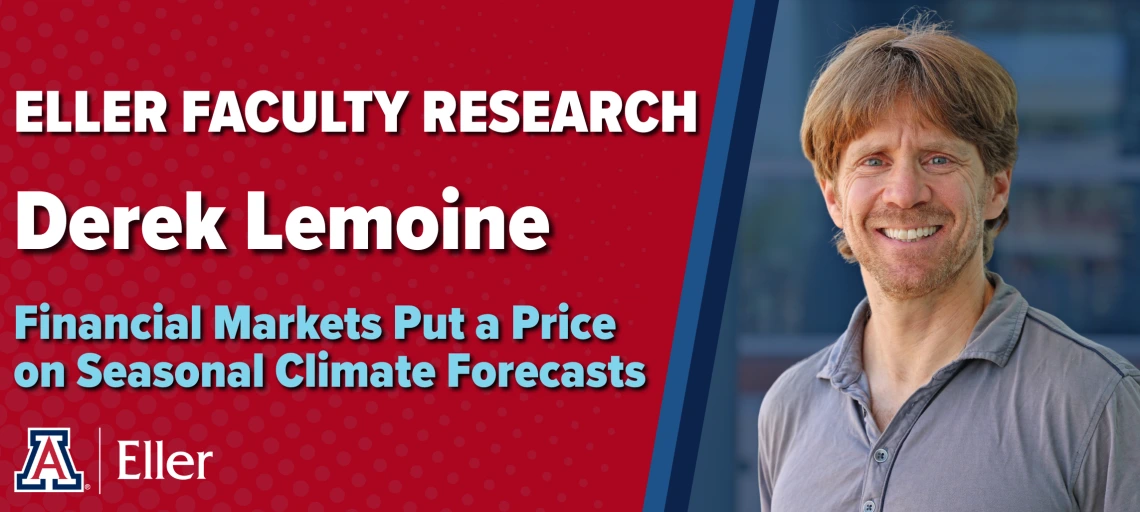Derek Lemoine Finds Financial Markets Put a Price on Seasonal Climate Forecasts

Governments and scientific agencies spend millions each year developing seasonal climate forecasts—predictions of weather patterns months in advance, such as how cold the winter might be or whether an El Niño will form. But until now, there’s been little evidence of whether these long-range forecasts hold any real value outside of scientific circles.
Derek Lemoine, professor of economics in the Eller College of Management, set out to answer that question. His research Financial Markets Value Skillful Forecasts of Seasonal Climate, shows that the financial world does, in fact, pay attention—and put a price—on the information these forecasts provide.
Lemoine analyzed data from 2010 to 2019, looking at how options traders—investors who buy and sell contracts tied to stock prices—reacted to major seasonal outlooks issued by the U.S. National Oceanic and Atmospheric Administration (NOAA). Specifically, he focused on NOAA’s Winter Outlook and El Niño Outlook, which predict temperature, precipitation and large-scale climate patterns months in advance.
The study examined “implied volatility”, a measure of how much traders expect stock prices to fluctuate. If an upcoming forecast could affect a company’s future performance—for example, by influencing heating costs, crop yields or shipping routes—traders might adjust their strategies in anticipation.
Lemoine found that both the Winter Outlook and the El Niño Outlook noticeably reduced uncertainty in the markets once they were released. That means traders had been pricing in the possibility that the forecasts could contain important news, and once the forecasts were made public, they adjusted accordingly.
These forecasts ripple across nearly every sector of the economy—from construction and retail to manufacturing and utilities. Agriculture, often thought to be the most weather-sensitive industry, was one of the least affected in this study.
The research shows that seasonal climate patterns matter for business performance. It also suggests that companies can’t fully shield themselves from forecasted weather changes without incurring significant costs. That has implications for how we think about adapting to long-term climate change: if it’s costly to adjust to a forecasted winter just a few months away, adapting to decades of climate change could be even more challenging.
Lemoine’s findings help justify the public investment in seasonal climate forecasting. These forecasts aren’t just scientific curiosities—they carry measurable value in the marketplace, guiding decisions that affect trillions of dollars in economic activity.

